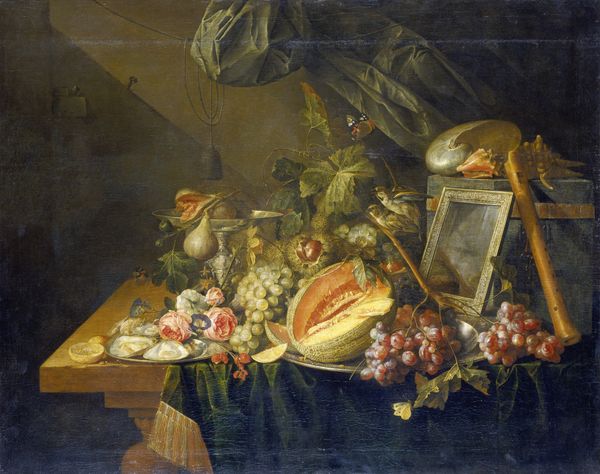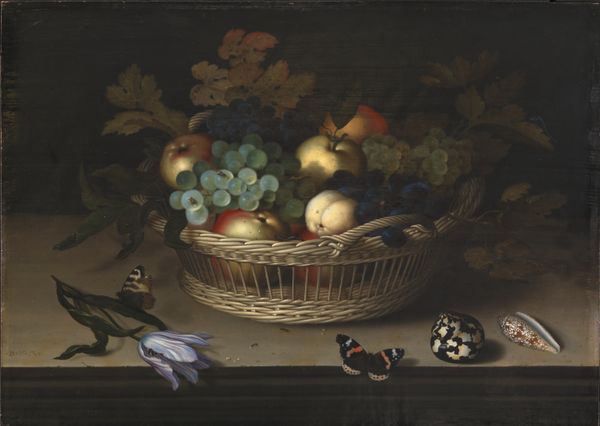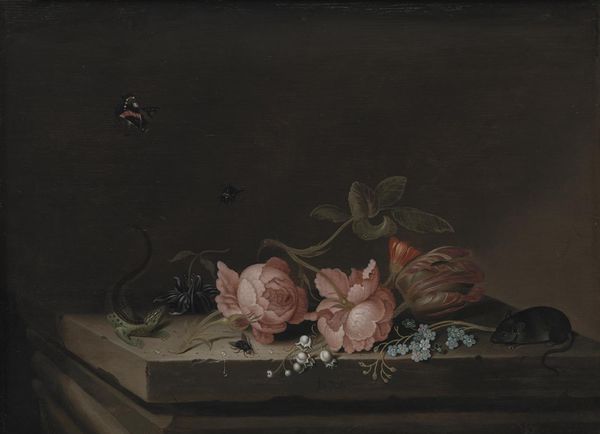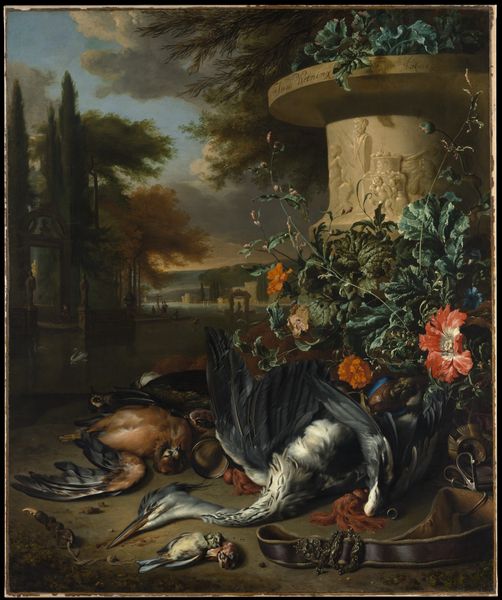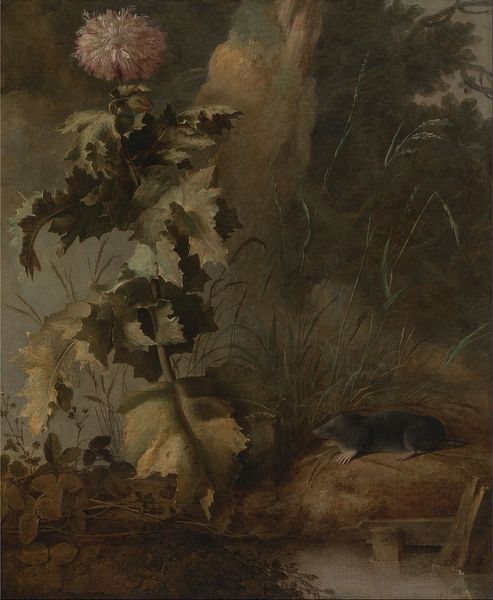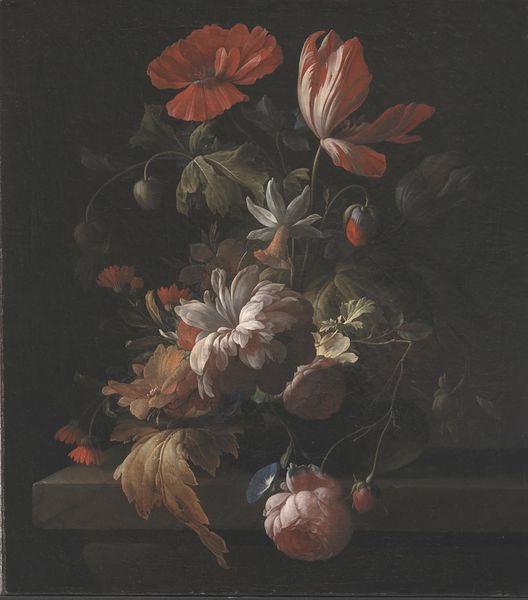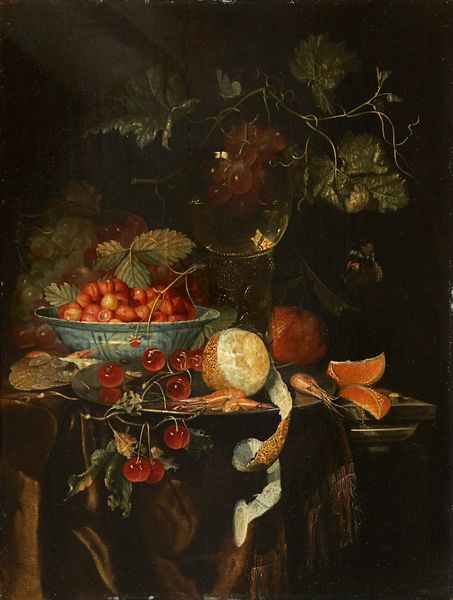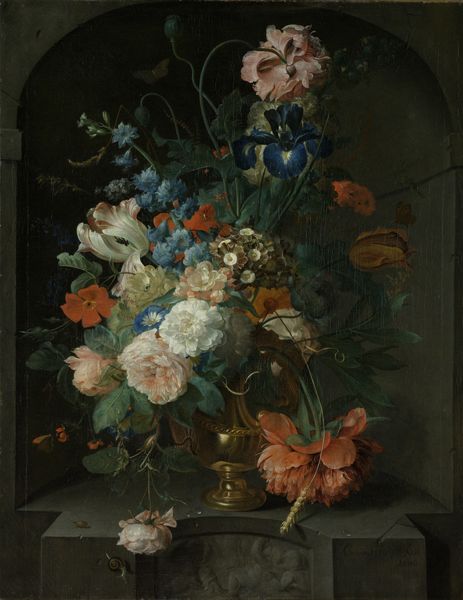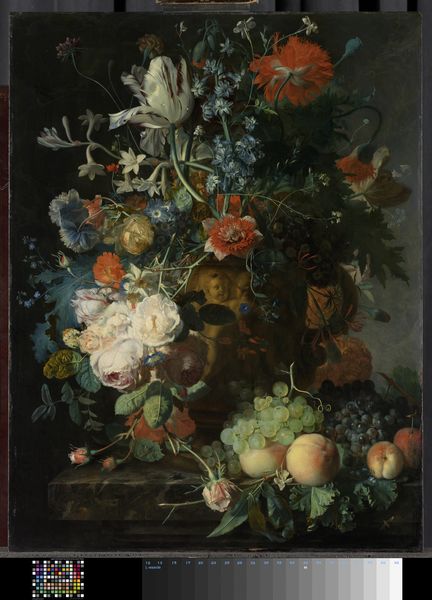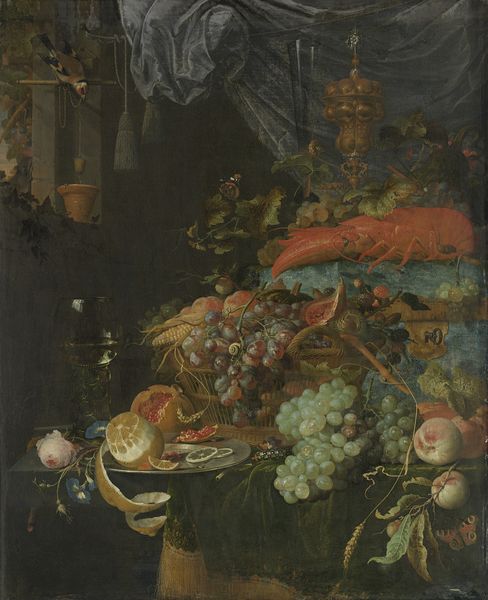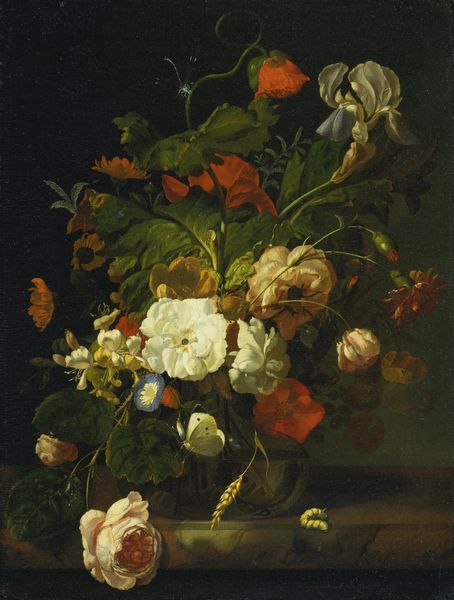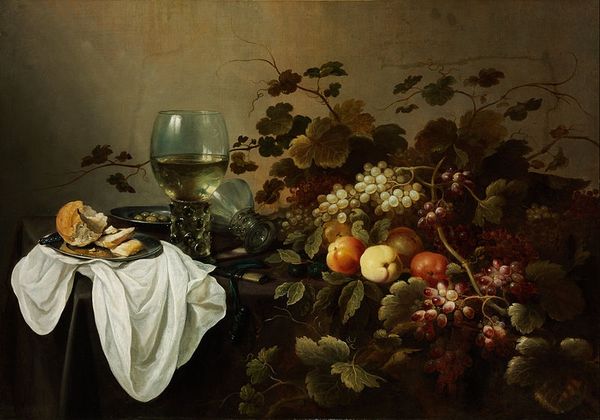
painting, oil-paint
#
baroque
#
animal
#
painting
#
oil-paint
#
landscape
#
oil painting
#
genre-painting
#
realism
Copyright: Public domain
Editor: Here we have "Still Life with Monkey, Fruits, and Flowers" painted in 1724 by Jean-Baptiste Oudry, using oil on canvas. The painting has a sense of opulence, almost theatrical, but I'm curious to know how you interpret this work. What catches your eye? Curator: Consider the way Oudry organizes the elements within the pictorial space. Notice how the horizontal ledge acts as a structural foundation. Above this, organic forms intermingle, creating both depth and a dynamic visual rhythm. The composition avoids strict symmetry, instead employing a nuanced balance of forms and colors to direct the viewer's gaze. Where does your eye first land, and how does it move through the composition? Editor: I think my eyes are first drawn to the silver platter of fruit, then they follow the monkey upwards. Does this asymmetrical balance influence how we understand the painting's narrative? Curator: The monkey’s gesture towards the fruit establishes a visual and thematic link between the elements. Consider how the arrangement of the fruit – its varied textures, colors, and the way light interacts with their surfaces – contributes to the overall sensory experience. Does the contrast between the raw, natural elements and the refined, artificial containers spark any thoughts? Editor: The contrast does create tension, yes. The natural objects are overflowing. I also hadn't noticed the different light interacting with various elements of the work, like the subtle glazing of the fruit, contrasting the flat rendering of the monkey’s face. Thanks, that’s a different perspective for me! Curator: Paying attention to these relationships can unlock richer understandings. Art is a formal language of visual symbols, and the more adept you become in analyzing and deciphering, the more you are in communion with art.
Comments
No comments
Be the first to comment and join the conversation on the ultimate creative platform.
